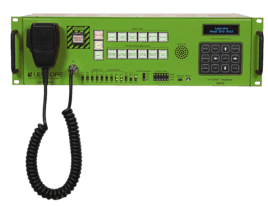There are many ways to cover up unwanted sounds, including even more undesirable sounds like lawn mowers or vacuum cleaners. But even within the more comfortable fashion of sound masking, there are several options for a higher-caliber of concealment.
It’s best to think of masking as having shades of intensity that can be adjusted to perfectly suit a room. It is possible to have multiple tones mixed within the generated sounds, so that speech is obscured for privacy and enhanced productivity, and comfort is enhanced in an atmosphere smoothed out for sonic peace.

If you are considering a sound masking system for your space, make sure it has variable settings and is tuned by a professional. Some systems offer a one-size-fits-all approach that is the equivalent to a fire hose. You probably want something with more than one option, providing a delicate rain shower here or a waterfall there, depending on what you are trying to mask. Otherwise you may do more harm than good.
Lencore i.Net system meets UL2572
To get the balance just right, more than 40 years of acoustical research and optimization have gone into the development of sound masking offerings manufactured in the U.S.A. by Lencore. Ever since company founder Jack Leonard built the first self-contained sound masking system, this family-owned company has built a reputation for its careful and considered approach to improving acoustics and the lives of those who live and work in the spaces enhanced by Lencore solutions.
There are really two criteria for sound masking: Privacy and comfort. Many masking solutions will provide privacy, but if they don’t offer the comfort of a well-tuned sonic solution, then often the system levels are turned down or even off by those who work around them every day.
To provide comfort, Lencore builds in more digital processing to enable the addition of deeper tones mixed into the spectrum of its products’ masking output. This blend cushions louder sounds and softens the edges of conversations so that speech is heard, but only by those who are participating in the conversation.



.png?width=58&height=58&name=X_logo_2023_(white).png)
